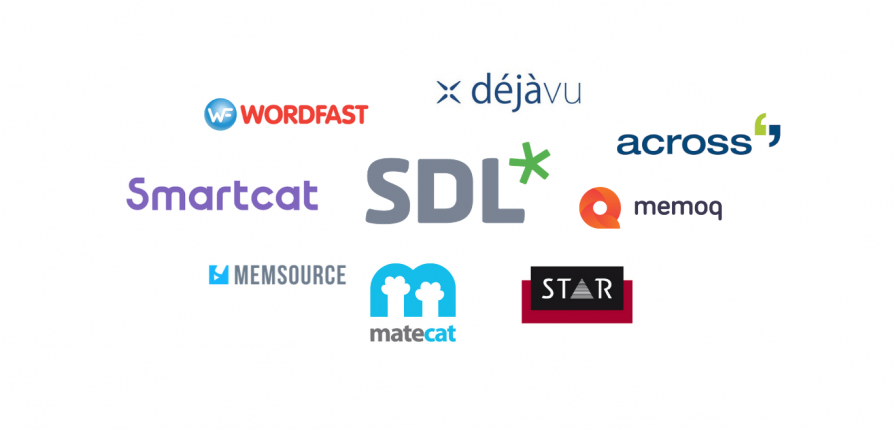The silicon revolution has changed just about every industry in the world. With the rise of information technology, and the corresponding surge of developments in telecommunications and data processing, the way we all live and work has changed almost beyond recognition.
The translation industry is no exception – and the benefits are real, for translators and their customers alike. So what are those benefits, and where exactly are they coming from? That’s what we’ll be looking at in this latest article.

CAT TOOLS
Speed up the process of translation
If there’s one piece of software that has done the most to change how translators work, it’s the computer-assisted translation tool – or CAT tool, for short. CAT tools are designed to speed up the process of translation, making it easier for translators to track their work, maintain consistency and preserve the formatting and structure of the original document – and more besides. They often also include “translation memories” – an automatic record of how the translator has previously handled specific words and phrases, or even entire sentences. These databases can be shared with the customer, or among large translation teams, to make future projects even faster and more cost- effective.
CAT tools work by displaying two versions of the document side by side.
At first glance, they can look a bit like a spreadsheet interface: two columns of text, with rows and rows each containing a “segment” of writing. The source text (the document’s original language) appears in the left-hand column, and the translator fills in the target text (the new language after translation) on the right. Each row – each “segment” – is typically one sentence long, although the translator can always split or merge these segments as required in order to create a piece of writing that flows well in the new language. Once you understand the layout, working in a CAT tool is as easy as using a word processor, but with all the extra benefits that come with having a piece of software designed especially for translators.
Of course, the word processor itself is a relatively recent invention in the long and noble history of translation (for more on which, you can read one of our past articles, “A short history of translation”). Even the ability to instantly rewrite, reformat and copy a document, as well as features like change tracking, have made a big improvement to translators’ quality of life. Heaven forbid we should ever have to go back to the days of manual typewriters or – shudder – handwriting!
TERM BASES AND DIGITAL DICTIONARIES
This is a big field, to say the least. While a term base isn’t quite the same thing as a dictionary, the two tools share some similar features and are useful for the same reasons. A term base is a collection of words and phrases, their definitions and any other related linguistic information that may be relevant. They’re meant to ensure consistency in the way terminology is used. A bilingual dictionary, of course, is a resource showing how individual words are translated to and from another language.
Both of these types of resources have always existed in some form or another, but digitisation has made them so much easier to use. A particularly obscure piece of terminology could once have taken minutes or even hours to look up, forcing a translator to dig through one weighty reference book after another in search of the perfect phrasing. Now, you can search for it in a web browser or an offline database and have your answer within seconds, barely breaking the flow of translation.
ONLINE RESEARCH
And on the subject of web browsers – how did we ever live without search engines? Plenty of translation projects require in-depth research on a subject, or sometimes just a quick bit of fact- checking. And now all of the world’s information is instantly available to us, whenever we need it. Naturally, a bit of common sense and good judgement is required to sort the good information from the bad, and sifting through it all can require strong research skills – but all of this is just part and parcel of what being a good translator means in this day and age. It certainly beats walking to the library with a long list of questions to spend the day looking up.
NEW KINDS OF TRANSLATION JOBS
Hypertext – the ability to embed links to other digital locations within a piece of writing – is one of the simplest, cleverest inventions of the digital age. These days, everyone needs a website, and you’ll want to get it translated if you’re growing into a new market. So, to keep up, translators have had to learn the fundamentals of web design and the peculiarities of the ways we use language online. And, of course, this is just one example of new types of translation work. Before software, there were no software translators; before machine learning, there were no translation algorithm developers. In short, the scope and variety of tasks that translators perform now has increased dramatically.
FASTER COMMUNICATION
An industry
whose entire purpose is to help businesses cross borders: that’s the translation business. No wonder it’s so important to be able to communicate quickly and effectively over large distances. Once again, this is where the internet comes in. The likes of email, cloud storage and voice-over-IP (VoIP) telephone services mean that fast international communication is now possible at little to no cost.
For businesses
who work with language service providers, this has immediate and lasting benefits. Think about how much easier it is now to source an expert individual or company located outside your country – something that may be essential when you need to get hold of a native speaker of your target language. Consider how much more quickly and efficiently their questions can be asked and answered than in the days of snail-mail and pricey international phone calls.
Project managers
There are implications for translation project managers, as well – the people who work for translation agencies to ensure jobs get done well and on time. With communication made so much quicker and easier (and cheaper), deadlines can be tightened up and costs can be cut accordingly. And this is all to say nothing of the benefits that come from computer-based project management systems: automatic workflow tracking, time management systems and resource databases are just a few of the ways translation agencies and their customers get added value from the digital age.
With all these developments
in the recent past, it’s exciting to wonder what will come next. No-one can say for certain, of course, but our guess is it’ll be less about automatic translation and more to do with empowering translators to work faster and more effectively than ever before. The likes of cloud storage, mobile apps and big data are bound to have benefits for translators just like everyone else. And that will mean top-quality translations, delivered sooner, at lower costs for everyone. What could be better?



